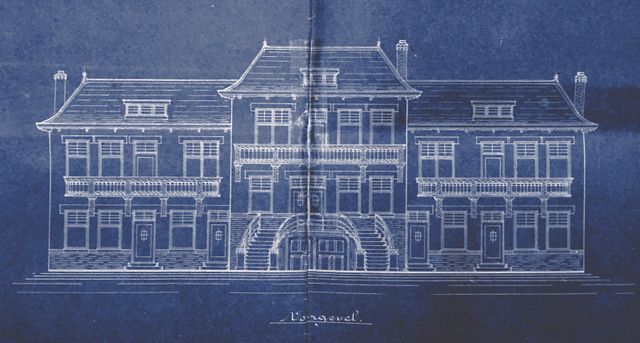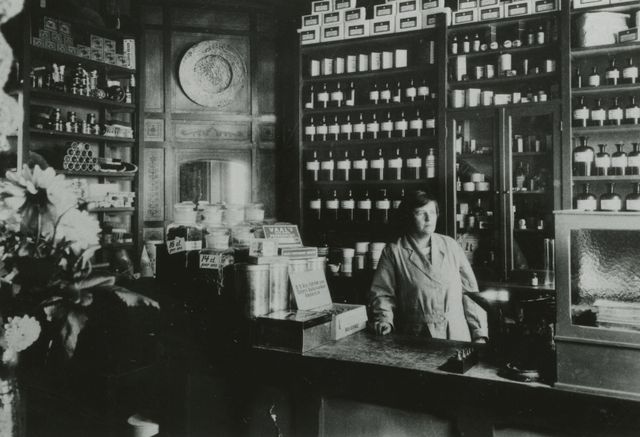
Panel 4 Amsterdamseweg
The Amsterdamseweg is one of the oldest roads in Amstelveen. It was built on a 13th century dyke that was meant to protect Amstelland against flooding. When Randwijck was built, the centuries-old route already accommodated several monumental buildings. Three buildings located close together stand out in particular. They were designed by the Amstelveen architect family Van der Bijl:
- Pharmacy In de Groene Hagedis, by father Leo van der Bijl in 1914. (No 485)
- The first ‘block of flats’ in Amstelveen, by son Jacob van de Bijl in 1921. (No 396-408)
- Villa Aemstelle in Bauhaus style, by son Herman van der Bijl in 1926. (No 511)
Attack on the Zenith Garage
A large number of German troops moved…
The Amsterdamseweg is one of the oldest roads in Amstelveen. It was built on a 13th century dyke that was meant to protect Amstelland against flooding. When Randwijck was built, the centuries-old route already accommodated several monumental buildings. Three buildings located close together stand out in particular. They were designed by the Amstelveen architect family Van der Bijl:
- Pharmacy In de Groene Hagedis, by father Leo van der Bijl in 1914. (No 485)
- The first ‘block of flats’ in Amstelveen, by son Jacob van de Bijl in 1921. (No 396-408)
- Villa Aemstelle in Bauhaus style, by son Herman van der Bijl in 1926. (No 511)
Attack on the Zenith Garage
A large number of German troops moved to this part of Amstelveen in 1940. Schiphol Airport could be closely guarded from here, and that was of great strategic importance. The German police chose the Incasso Bank as its headquarters. Just down the road, the Germans took their vehicles to the Zenith garage, run by the Van Kleef family, for maintenance. One of the guards there thought he was having a nice date with a Dutch girl. What he did not know, was that she was in the resistance and was carrying a bomb in her suitcase. When she was back on her bike to Amsterdam, the bomb went off. All German vehicles in the garage were destroyed.





